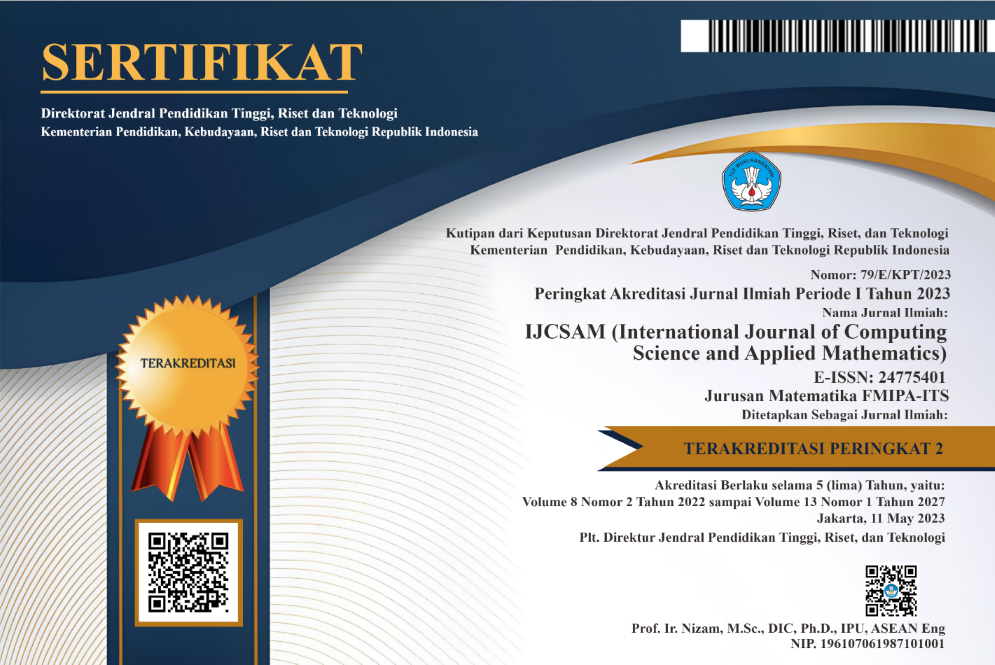Combined Model of Markov Switching and Asymmetry of Generalized Seasonal Autoregressive Moving Average Conditional Heteroscedasticity for Early Detection of Financial Crisis in Hong Kong
Abstract
Full Text:
PDFReferences
Q. F. Centre. (2014) The Global Financial Centres Index 16 [Online]. Available: http://www.mfcmoscow.com/assets/files/analytics/GFCI16 22September2014.pdf. [Accessed: 03 December 2020].
B. F. I. Settlements. (2010) Report on Global Foreign Exchange Market Activity in 2010. Triennial Central Bank Survey [Online]. Available: https://www.bis.org/publ/rpfxf10t.pdf. [Accessed: 15 December 2020].
A. Y. So, “”One Country, Two Systems” and Hong Kong - China National Integration: A Crisis-Transformation Perspective,” Journal of Contemporary Asia, vol. 41, pp. 99–116, 2011.
Y. H. Lui, A. Leung, and O. J. Jegede, “Research Report on Overseas Experience in Providing Continuing Education for Older Persons,” The Open University of Hong Kong, Hong Kong, 2002.
H. K. M. Authority. (2008) Hong Kong Monetary Authority Annual Report 2008 [Online]. Available: https://www.hkma.gov.hk/media/eng/publication-and-research/annualreport/2008/ar2008.pdf. [Accessed: 24 December 2020].
G. Kaminsky, S. Lizondo, and C. M. Reinhart, “Leading Indicators of Currency Crisis,” IMF Staff Papers, pp. 1–48, 1998.
(2020) Data ekspor Hongkong [Online]. Available: https://data.imf.org/regular.aspx?key=6101371. [Accessed: Date not provided].
R. F. Engle, “Autoregressive Conditional Heteroscedasticity with Estimates of the Variance of United Kingdom Inflation,” Econometrica,vol. 50, pp. 987–1007, 1982.
T. Bollerslev, “On the Correlation Structure for the Generalized Autoregressive Conditional Heteroscedastic Process,” Journal of Time Series Analysis, pp. 121–131, 1988.
D. B. Nelson, “Conditional Heteroscedasticity in Asset Returns: A New Approach,” Econometrica, vol. 59, pp. 347–370, 1991.
J. D. Hamilton and R. Susmel, “Autoregressive Conditional Heteroscedasticity and Changes in Regime,” Journal of Econometrics, pp.307–333, 1994.
Sugiyanto, E. Zukhrohnah, and M. Setianingrum, “The Detection of Financial Crisis using Combination of Volatility and Markov Switching Models based on Real Output, Domestic Credit per GDP, and ICI Indicators,” Journal of Physics, pp. 1–6, 2018.
J. L. Ford, B. Santoso, and N. J. Horswood, “Asian Currency Crisis: Do Fundamentals Still Matter? A Markov Switching Approach to Causes and Timing,” Working Papers, 2007.
B. G. Hermosillo and H. Hesse, “Global Market Condition and Systemic Risk: IMF, IMF Working Paper,” 2009
DOI: http://dx.doi.org/10.12962%2Fj24775401.v10i2.21943
Refbacks
- There are currently no refbacks.
View My Stats

International Journal of Computing Science and Applied Mathematics by Pusat Publikasi Ilmiah LPPM, Institut Teknologi Sepuluh Nopember is licensed under a Creative Commons Attribution-ShareAlike 4.0 International License.
Based on a work at https://iptek.its.ac.id/index.php/ijcsam.






